John Singer Sargent Male Nudes
These John Singer Sargent male nudes are half-invented ghosts — scattered across art studios, disobedient sons of academic realism — figures pretending to exist solely for artistic study, while trembling under the heat of homoerotic intent. Invite one of these John Singer Sargent male nudes home to welcome high-class vintage raunch into your world.

Quick view 
Quick view 
Quick view 
Quick view 
Quick view 
Quick view Figure of Apollo from 'The Forge of Vulcan' - John Singer Sargent Art Print From $35USD /Choose options 
Quick view Figure of Apollo from 'The Forge of Vulcan' - John Singer Sargent Framed Canvas From $105USD /Choose options 
Quick view 
Quick view 
Quick view 
Quick view 
Quick view 
Quick view 
Quick view 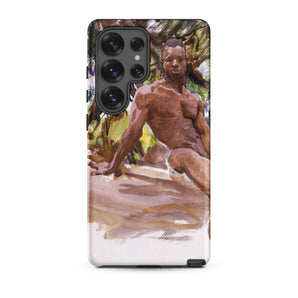
Quick view 
Quick view 
Quick view 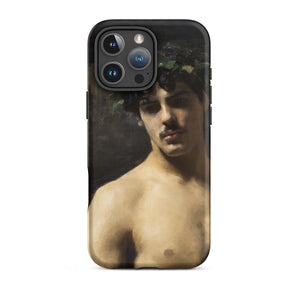
Quick view 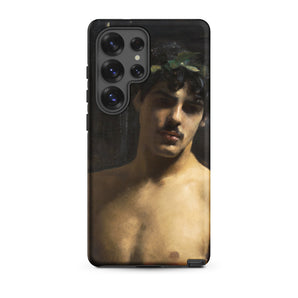
Quick view 
Quick view 
Quick view 
Quick view 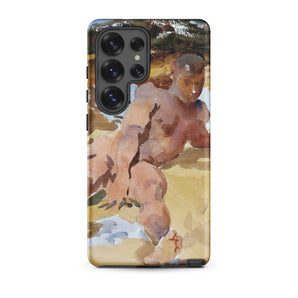
Quick view 
Quick view 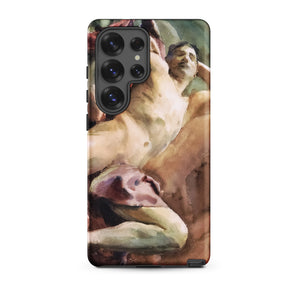
Quick view 
Quick view 
Quick view 
Quick view -
Your Latest Loves
Go Treasure Hunting
FAQs
About this collection
Naked men stretched across crumpled linens, evoking the orientalist fantasies of Parisian salon culture, their bodies echoing both Neoclassical muscle studies and the queer longing simmering beneath Belle Époque portraiture. Every brushstroke plays a trick: a realist gaze pretending neutrality, while the male nude itself vibrates with the latent eroticism of a body too carefully seen. This is not the heroic nude of Neoclassical tradition, standing tall in academic exhibitions—this is flesh drenched in intimacy, a queer figuration camouflaged within the Etonian draftsman’s impeccable technique.
Beneath the sheen of respectability, you can taste the salt of Floridian afternoons, where Sargent’s watercolor studies of male laborers on a beach slide between sunlight and secrecy. Painted under the pretext of technical mastery, but pulsing with the heat of homoerotic portraiture—these nudes are never just anatomical. They are postcards smuggled from the depths of longing, notes folded into the margins of academic realism, bodies caught between Aesthetic Movement sensuality and the hunger of a queer modernist avant la lettre.
This collection does not merely present Sargent as the society portraitist of Gilded Age fame; it confronts him as a man in exile within his own desires. His male nudes exist as both confession and concealment—caught between the golden frame of respectability and the quiet rebellion of the gay gaze wrapped in classical technique.
Here, nakedness is not purity—it is code.
Where can my order ship to?
Any treasure you find here can be shipped to:
North America
Canada, Mexico, Continental United States
South America
Argentina, Brazil
Europe
Albania, Andorra, Austria, Belgium, Bosnia & Herzegovina, Bulgaria, Croatia, Cyprus, Czechia, Denmark, Estonia, Faroe Islands, Finland, France, Germany, Gibraltar, Greece, Greenland, Guernsey, Hungary, Iceland, Ireland, Isle of Man, Italy, Jersey, Kosovo, Latvia, Liechtenstein, Lithuania, Luxembourg, Malta, Monaco, Montenegro, Netherlands, North Macedonia, Norway, Poland, Portugal, Romania, Russia, San Marino, Serbia, Slovakia, Slovenia, Spain, Sweden, Switzerland, United Kingdom, Vatican City
Middle East & Asia
China, Hong Kong, India, Indonesia, Israel, Japan, Lebanon, Malaysia, Philippines, Singapore, South Korea, Taiwan, Thailand, Türkiye, United Arab Emirates, Vietnam
Africa
South Africa
Oceania
Australia, New Zealand
—
Every package tracked so you can watch your treasure move from A to B to You.
Sent carbon neutral at no extra charge. Helping you gain peace of mind your money's being kind.
Orders to the rest of the world coming as soon as I can!
How much will shipping cost?
Delivery to 60+ countries
Free shipping worldwide — check if we ship to you
When will my package arrive?
USA: 4-9 days • Canada: 5-12 days • UK: 4-9 days • Europe: 5-10 days • Australia: 4-9 days • New Zealand: 5-12 days • Rest of the world: 3-4 weeks
Why the wait? Every treasure you find here is produced after you purchase. So the delivery times include production, quality assurance, thoughtful packaging and shipping. More details on orders and shipping
Every package tracked so you can watch your treasure move from A to B to You.
Sent carbon neutral at no extra charge. Helping you gain peace of mind your money's being kind.
Can I return my order?
1. Open Request
You're welcome to open a return / exchange request within 30 days of your order's delivery. All items for return must be delivered back in their original condition, with their original packaging included. Note: original shipping costs will not be refunded unless item arrives incorrect, damaged or faulty.
2. Wait For Approval
Expect a reply within 24-48hr
Once your return's approved, you'll receive the return address, so you can mail items back with confidence. Please wait for approval before mailing anything, to avoid confusion and disappointment.
3. Return Items
Return shipping: You pay for return shipping fees unless you received faulty / incorrect items or they get damaged in transit.
Tracking: Please send your items back with tracking. No refunds can be given for items that aren't received.
On sale: No returns or exchanges for discounted / on sale items unless they arrived damaged or faulty.
Payment method: After your return's approved, you'll be refunded via your original payment method.
...
Learn more about my step-by-step returns process.



























































